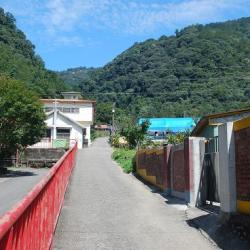Wanda Community in Ren'ai Township, Nantou County, is located at the foothills of the northwest of Mount Wanda, 2 km away from the west side where Wanda Stream and Zhuoshui Stream converge. It was originally the land of the Atayal tribe of the Wanda Group. Later in the middle of the Japanese occupation period, due to the construction of the Wanda Reservoir, power plant employees began to move into the area. Now it is the staff dormitory of Wanda Power Plant, and there are also indigenous people living there. The Wushe Kashe Historic Trail that was built during the Japanese occupation also passes through here.
Hamlet
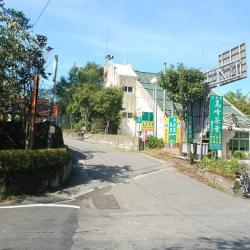
The Wushe Kashe Historic Trail runs through Ren’ai Township and Xinyi Township in Nantou County, with a total length of about 60 km. The trail is made up of two trails, the Wanda Wushe Trail and Wanda Kashe Trail, which passes through the traditional territories of the Sediq and Bunun. In fact, the Wushe Kashe Historic Trail was the first Lifan road (Indigene management route) to be studied, because there are important Qubing archaeological sites along the way, and it is possible to understand the footprints of prehistoric populations, which has considerable academic value and indicator significance.
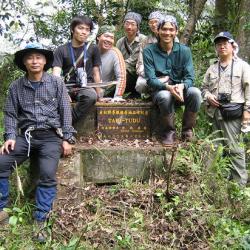
The Zhuoshe Monument in Xinyi Township, Nantou County, is located on the former site of the Education Center for Indigenous Children in Liangjiushe, which was set up by the Government-General of Taiwan during the Japanese occupation. Later in 2003, the Bunun people set up a stone monument at the flagpole stand of the Education Center with the inscribed words "Monument erected in commemoration of the people of Zhuoshe who sought their roots and ancestral home”. The trail is made up of two trails, the Wanda Wushe and Wanda Kashe, which passes through the traditional territories of the Sediq and Bunun. In fact, the Wushe Kashe Historic Trail was the first Lifan road (Indigene management route) to be studied, because there are important Qubing archaeological sites along the way, and it is possible to understand the footprints of prehistoric populations, which has considerable academic value and indicator significance.
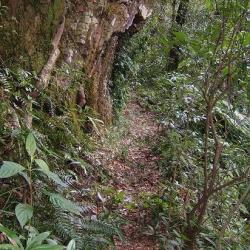
The Wushe Kashe Historic Trail runs through Ren’ai Township and Xinyi Township in Nantou County, with a total length of about 60 km. The trail starts from Wushe in the north and ends in old Bakras Hamlet in the south. It is made up of two routes, the Wanda Wushe trail and Wanda Kashe trail, which pass through the traditional territories of the Sediq and Bunun. In fact, the Wushe Kashe Historic Trail was the first Lifan road (Indigene management route) to be studied, because there are important Qubing archaeological sites along the way, and it is possible to understand the footprints of prehistoric populations, which has considerable academic value and indicator significance.
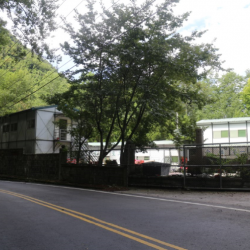
Dapan is located in Heping District, Taichung City, about 1,450 meters above sea level. After the completion of the Dajia River Historic Trail in the middle of the Japanese occupation, the Dapan Police Post was set up there. While the then Governor-General in Taiwan, Hasegawa Kiyoshi, patrolled the indigenous territories and dropped by to inspect the Dajia power development project in 1941, he once looked to the planned site of the Dajian Electric Power Fortification from Dapan. During the Japanese occupation, the Dapan suspension bridge was erected. It was the longest suspension bridge on the Dajia River Historic Trail that connected Dapan and Dajian. In the post-war period, the suspension bridge was damaged and converted into a composite bridge. Since then it has undergone many reconstructions. In 2010, the current Dapan Bridge was rebuilt and opened to traffic. The bridge now leads to Deji and Jiayang.
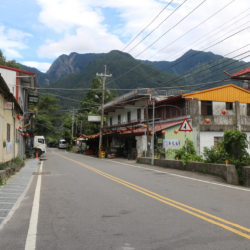
Jiayang Hamlet is located on the Jiayang Alluvial Fan on the right bank of Dajia River in Heping District, Taichung City. The Atayal people of Jiayangshe originally lived here. However, when the National Government built the Deji Reservoir after the war, the rising water level flooded the original Jiayang Hamlet. Therefore, a new settlement was formed, located 5 km northeast of Deji Reservoir. During the preparation of building the Central Cross-Island Highway, the Executive Yuan, the Taiwan Provincial Government, the Taichung County Government, the Taiwan Electric Power Company and other units set up a special team to be responsible for the drafting, review and implementation of Xin Jiayang Village construction plan. The construction was completed in 1968 and there were indigenous residential houses, unit staff dormitories and public facilities.
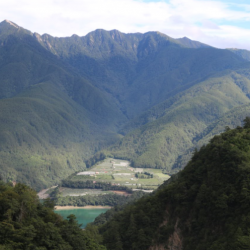
Jiayangtai is located on the terrace, right of the Dajia Riverbank in Heping District, Taichung City, and was the original residing place for the Atayal people of Jiayangshe. However, in the post-war period, when the Nationalist Government built the Deji Reservoir in response to the completion of the reservoir project, the rising water level flooded the original Jiayang Hamlet. Therefore, Xin (new) Jiayang was built 5 km northeast of Deji Reservoir. During the preparations for the construction of the Central Cross-Island Highway, The Executive Yuan, the Taiwan Provincial Government, the Taichung County Government, the Taiwan Electric Power Company and other units set up a special team to be responsible for the drafting, review and implementation of Xin Jiayang Village construction plan. The construction was completed in 1968 with indigenous residential houses, unit staff dormitories and public facilities.
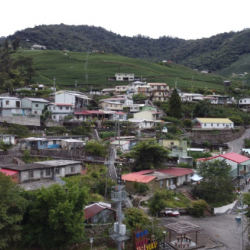
Xin Jiayang is located 5 km northeast of Deji Reservoir in Heping District, Taichung City. After the completion of the reservoir project, the rising water level flooded the original Jiayang Hamlet. Therefore, a new settlement was formed. In the post-war period, the Nationalist Government prepared for the construction of the Central Cross-Island Highway. The Executive Yuan, the Taiwan Provincial Government, the Taichung County Government, the Taiwan Electric Power Company and other units set up a special team to be responsible for the drafting, review and implementation of Xin Jiayang Village construction plan. The construction was completed in 1968 with indigenous residential houses, unit staff dormitories and public facilities.
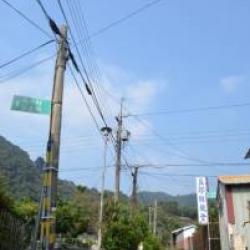
The Nanshi Hamlet is located on the flat terrace, right of Dajia riverbank, at the southern foothills of Chuyunshan in Heping District, Taichung City. The people of Nanshi Hamlet originally lived in Baimaoshe near the Baimaoxishan ridge and Alengshe in the northern valley of the Alengshan. However, in the early days of Japanese rule, with the establishment of the Aiyong Border in Baimaoshan ridge, the people of Baimaoshe and Alengshe migrated downwards to live in the lower reaches of Baimao River. In 1927, they moved with the people from nearby hamlets to the present location and named it Nanshi Hamlet. Since the residents of the Nanshi Hamlet mainly came from Baimaoshe and Alengshe, the hamlet was also known as the new Baimao.
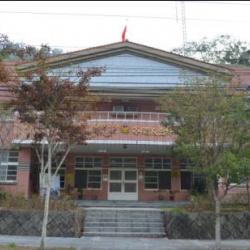
Guguan is located in Heping District, Taichung City. When the Governor-General in Taiwan began to excavate a road to Lishan in the middle of the Japanese occupation period, the Meiji Police Post, which is the current Guguan Police Dormitory, was set up the same time the Dajia River Historic Trail was completed in 1923. Dajia River Historic Trail, which connects to the Beiyanan Historic Trail in the north, was an important indigene road that leads to Nenggao County in Taichung during the Japanese occupation. In 1967, the Guguan Police Station was established. Although the building was originally built during the Japanese occupation, it was located at a different site from the Meiji Police Post.
